ChatGPT:
Furnas, São Miguel: Origin, History, and Geological Features
Furnas is a picturesque village located on the eastern side of São Miguel Island, the largest island in the Azores archipelago of Portugal. Nestled within a volcanic crater, Furnas is renowned for its geothermal activity, lush landscapes, and rich cultural history.
Origin and History
Early Settlement
• 15th Century Colonization: Furnas was settled shortly after the Portuguese discovered the Azores in the 15th century. The fertile volcanic soil and abundant water sources made it an ideal location for agriculture.
• Development: Over the centuries, Furnas evolved from a small farming community into a sought-after destination for its therapeutic hot springs.
19th Century Growth
• Health Resort Era: In the 19th century, Furnas gained prominence as a health resort. European aristocracy and affluent travelers were drawn to its mineral-rich thermal waters believed to have healing properties.
• Terra Nostra Garden: Established in 1775 and expanded in the 19th century, this botanical garden became a centerpiece of Furnas. It showcases exotic plants from around the world and features a large thermal swimming pool.
Modern Day
• Tourism and Culture: Today, Furnas balances its historical charm with modern amenities. It remains a popular destination for wellness tourism, outdoor activities, and cultural experiences.
Geological Features
Furnas Volcano
• Caldera Formation: Furnas is situated within a caldera formed by the Furnas Volcano, one of three active central volcanoes on São Miguel Island.
• Volcanic Activity: The volcano’s last significant eruption occurred in 1630. Although currently dormant, the area is geothermally active.
Geothermal Phenomena
• Hot Springs and Fumaroles: The village is dotted with hot springs, geysers, and fumaroles emitting steam and volcanic gases. The most notable sites include:
• Caldeiras das Furnas: An area with boiling mud pools and sulfur vents.
• Poça da Dona Beija: A series of thermal pools where visitors can bathe in warm, iron-rich waters.
Lagoa das Furnas (Furnas Lake)
• Crater Lake: This serene lake occupies part of the caldera and is surrounded by walking trails and picnic areas.
• Chapel of Nossa Senhora das Vitórias: A neo-Gothic chapel located on the lake’s edge, adding historical interest to the natural beauty.
Volcanic Soil and Biodiversity
• Flora: The volcanic soil supports a diverse range of plant life, from endemic species to imported varieties in botanical gardens.
• Agriculture: The fertile land is ideal for cultivating tea, pineapples, and other crops unique to the region.
Cultural Significance
Integration with Nature
• Therapeutic Practices: The local culture embraces the therapeutic aspects of the geothermal waters, integrating them into daily life and wellness practices.
• Environmental Stewardship: Efforts are made to preserve the natural environment, promoting sustainable tourism and conservation.
Architectural Heritage
• Historical Buildings: Furnas features traditional Azorean architecture, including churches, chapels, and quaint houses that reflect its historical development.
Conclusion
Furnas is a unique blend of natural wonder and cultural richness. Its origins as a volcanic landscape have shaped its history, from early settlement and agricultural development to becoming a modern destination that values wellness, nature, and heritage. Visitors to Furnas can immerse themselves in its geothermal landscapes, explore historical sites, and experience a way of life deeply connected to the Earth’s geological forces.
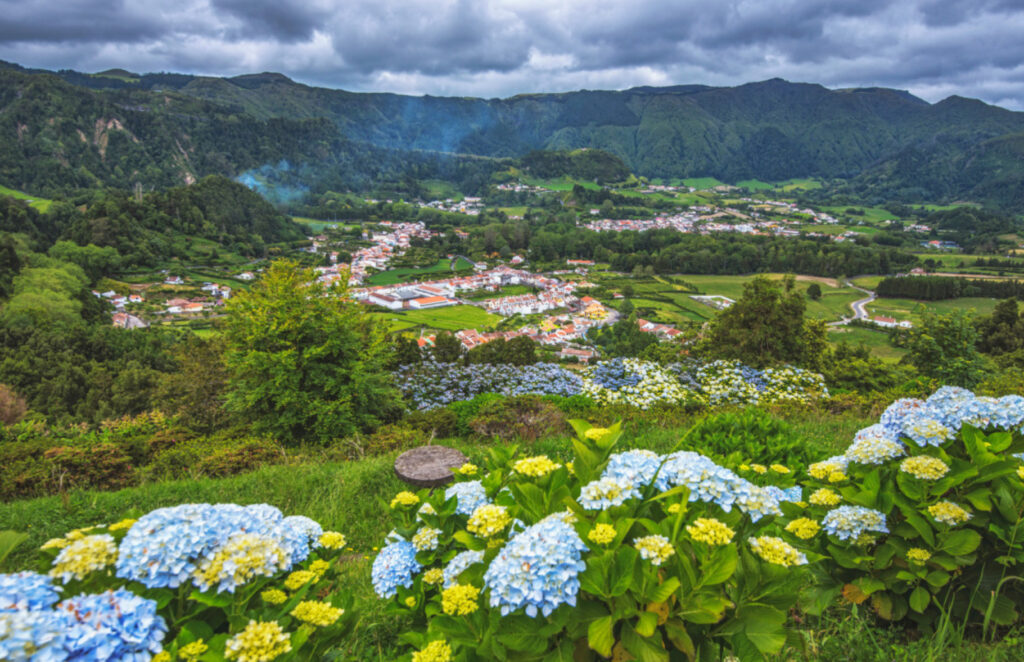
Terra Nostra Garden and Its Plant Collections
Terra Nostra Garden is a renowned botanical garden located in the village of Furnas. Established in the 18th century, the garden is famous for its extensive collection of exotic plants, thermal bathing pools, and beautifully landscaped grounds that reflect centuries of horticultural passion.
History of Terra Nostra Garden
Origins in the 18th Century
• Thomas Hickling’s Vision: The garden traces its origins back to 1775 when Thomas Hickling, a wealthy American merchant and then-U.S. Consul to the Azores, built a summer residence known as “Yankee Hall.” He began landscaping the surrounding area, planting trees and creating a serene environment.
19th Century Expansion
• Viscount of Praia’s Contribution: In 1848, the property was acquired by the Viscount of Praia, who expanded the gardens and introduced new plant species, enhancing its botanical diversity.
• Transformation into a Botanical Garden: The subsequent owners continued to develop the garden, incorporating plants from around the world and creating specialized collections.
20th Century Enhancements
• Bensaúde Family Stewardship: In 1872, the Bensaúde family, prominent Azorean entrepreneurs, purchased the garden. Under their care, the garden underwent significant improvements, including the enlargement of the thermal pool and the introduction of rare plant species.
• Opening to the Public: Recognizing its cultural and natural value, the garden was eventually opened to the public, becoming a key attraction on the island.
Features of Terra Nostra Garden
Thermal Pool
• Iron-rich Waters: The garden’s iconic thermal pool is filled with warm, iron-rich water sourced from nearby geothermal springs. The water’s high iron content gives it a distinctive reddish-orange hue.
• Therapeutic Experience: Visitors can bathe in the pool, enjoying the therapeutic benefits believed to be associated with the mineral-rich waters.
Landscaped Grounds
• Design and Layout: The garden features a harmonious blend of English-style landscaping with winding paths, rolling lawns, and carefully planned vistas.
• Architectural Elements: Bridges, gazebos, and stone benches are interspersed throughout, providing picturesque spots for relaxation and contemplation.
Plant Collections
Terra Nostra Garden is home to one of the most diverse botanical collections in the Azores, featuring over 2,500 species from various climatic regions.
Camellia Collection
• Extensive Variety: With over 600 different species and cultivars, the garden boasts one of the largest collections of camellias in the world.
• Seasonal Beauty: The camellias bloom from late autumn to early spring, adding vibrant colors to the garden during the cooler months.
Ferns and Cycads
• Fern Garden: A dedicated area showcases a variety of ferns, including impressive tree ferns that create a lush, tropical atmosphere.
• Cycads Collection: These ancient plants, often referred to as “living fossils,” are displayed prominently, highlighting their unique characteristics.
Azaleas and Rhododendrons
• Spring Blooms: Azaleas and rhododendrons provide a spectacular display of color in the spring, enhancing the garden’s aesthetic appeal.
• Diversity: Numerous species and hybrids are cultivated, offering a rich array of forms and hues.
Palms and Bamboo
• Exotic Palms: Various palm species contribute to the garden’s subtropical feel, some of which are rare and not commonly seen in Europe.
• Bamboo Groves: The bamboo sections add an element of tranquility, with towering stalks and the gentle sound of rustling leaves.
Endemic and Exotic Species
• Azorean Flora: Native plants are preserved and showcased, emphasizing the importance of local biodiversity.
• Global Plant Exchange: Species from Asia, Africa, the Americas, and Oceania reflect the garden’s long history of plant collection and exchange.
Conservation and Education
Botanical Research
• Plant Preservation: The garden plays a crucial role in conserving rare and endangered plant species through cultivation and propagation programs.
• Scientific Collaboration: Terra Nostra Garden collaborates with international botanical institutions, contributing to global research efforts.
Conclusion
Terra Nostra Garden stands as a living testament to the rich natural heritage of the Azores. Its meticulously curated plant collections and historical significance offer a unique experience that blends relaxation, education, and appreciation of nature’s beauty. Whether you’re a botany enthusiast, a history lover, or simply seeking a peaceful retreat, Terra Nostra Garden invites you to explore and immerse yourself in its enchanting landscapes.
Visiting Information
• Location: Rua Padre José Jacinto Botelho, Furnas, São Miguel Island, Azores, Portugal.
• Opening Hours: Typically open daily from morning until evening; hours may vary seasonally.
• Admission: An entrance fee applies, which includes access to the garden and thermal pool.
• Website: For the most current information on hours, events, and guidelines, visit the official Terra Nostra Garden website or contact them directly.
Tips for Visitors
• Bring Swimwear: If you plan to enjoy the thermal pool, remember to bring a swimsuit and towel. The iron-rich water can stain light-colored fabrics.
• Wear Comfortable Shoes: The garden is expansive, so comfortable footwear is recommended for exploring the various paths and terrains.
• Check the Weather: São Miguel’s weather can be changeable. Dressing in layers and bringing a raincoat or umbrella can enhance your comfort.
• Respect the Environment: Help preserve the garden’s beauty by staying on designated paths, not picking plants, and disposing of waste properly.
By visiting Terra Nostra Garden, you not only experience a place of exceptional beauty but also support the ongoing preservation and appreciation of the Azores’ unique natural and cultural heritage.
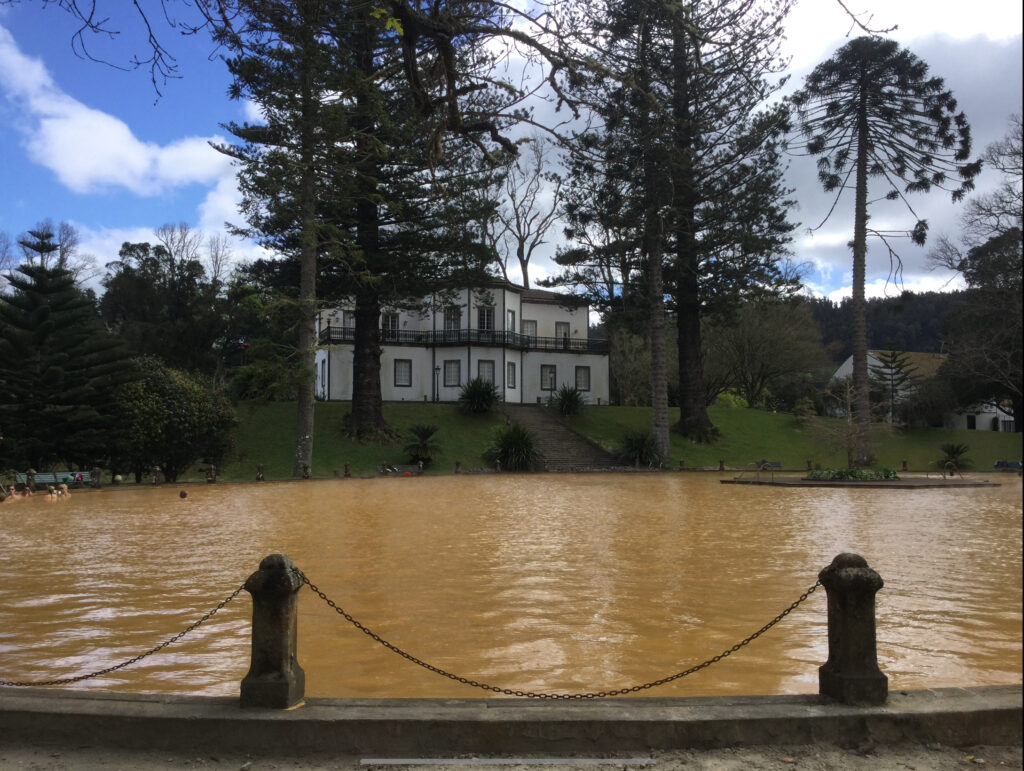
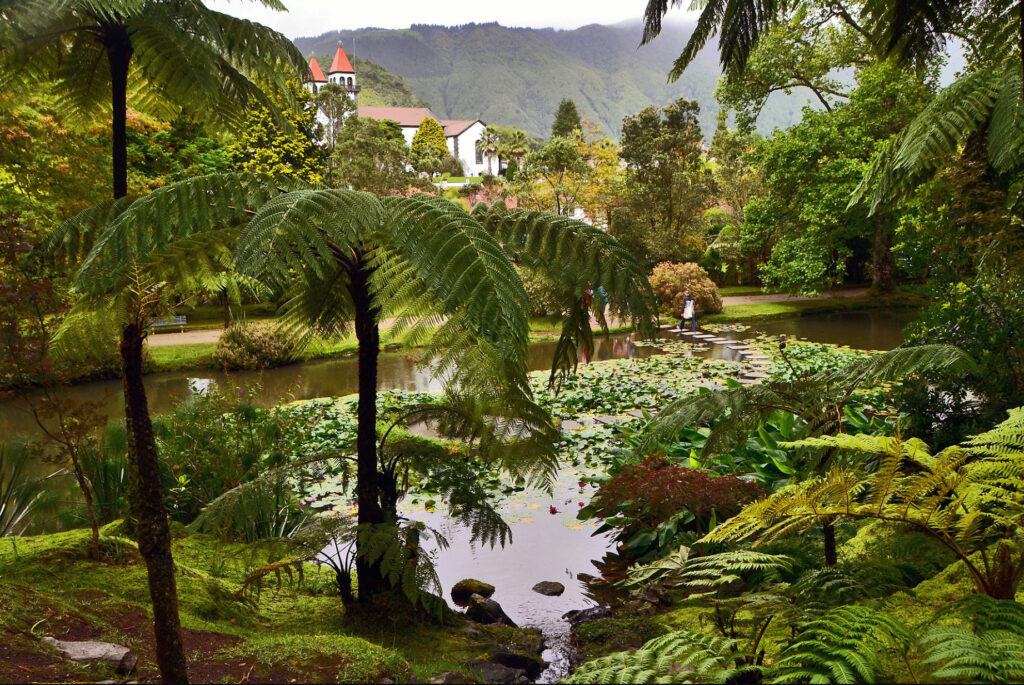
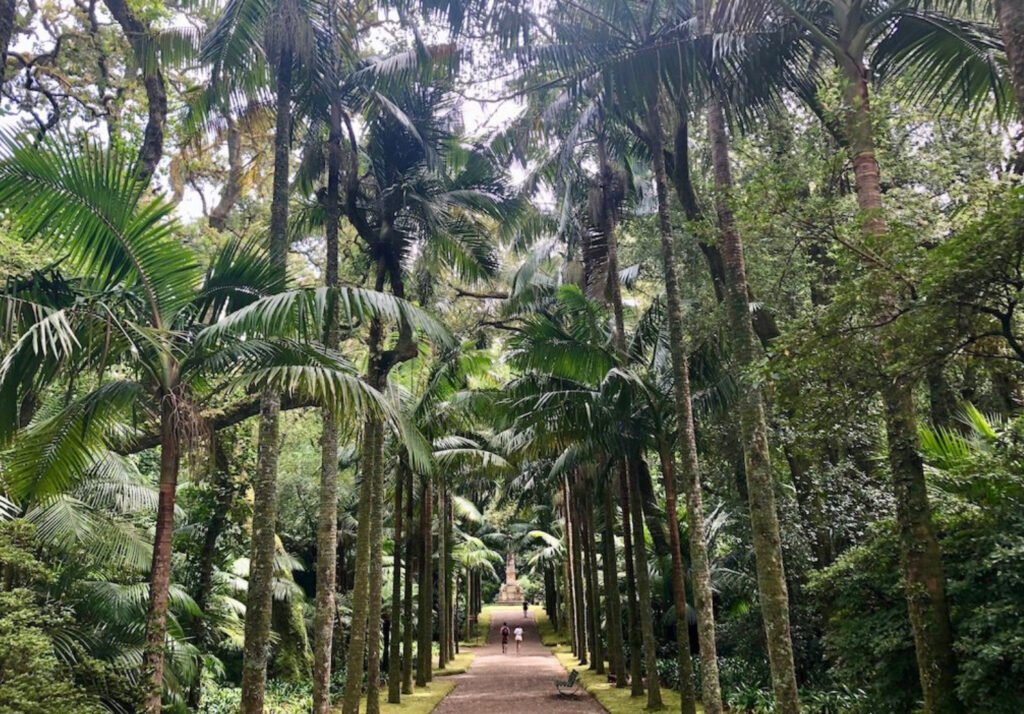
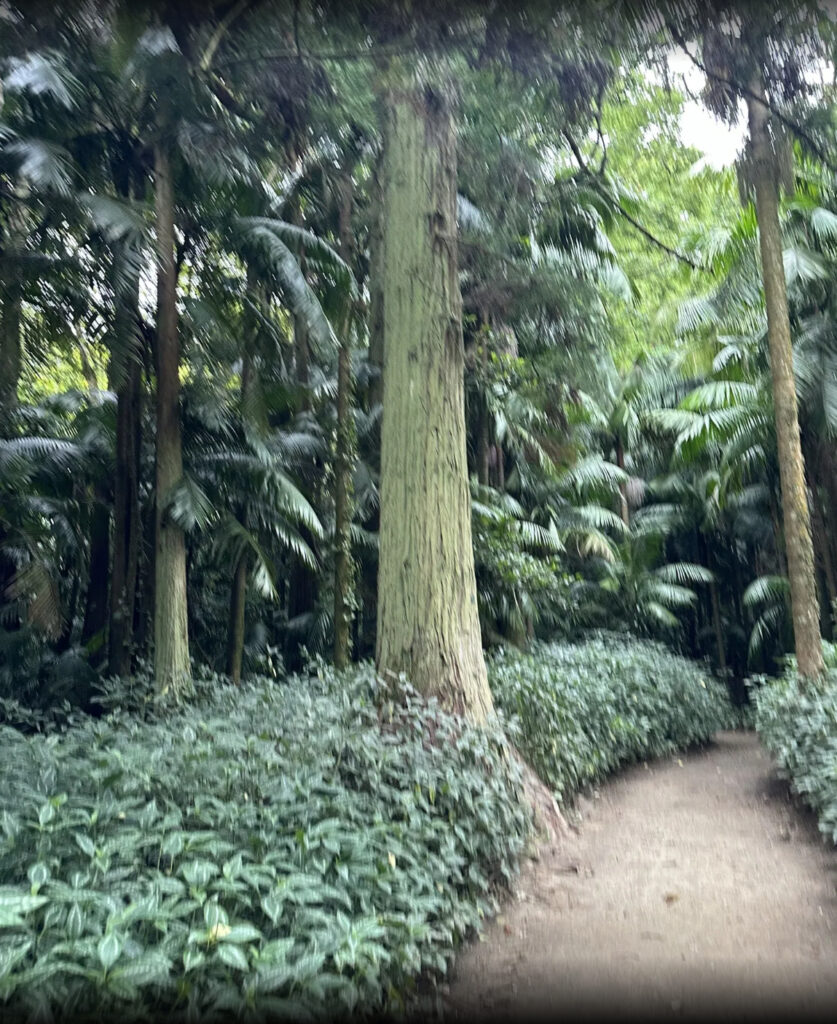
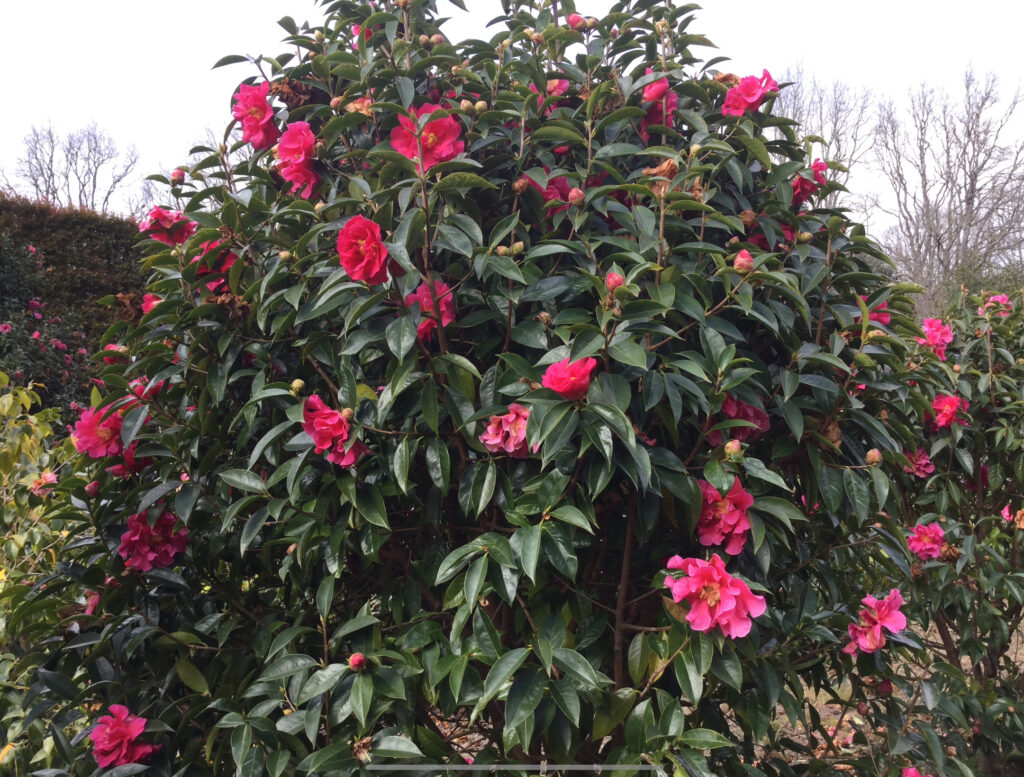
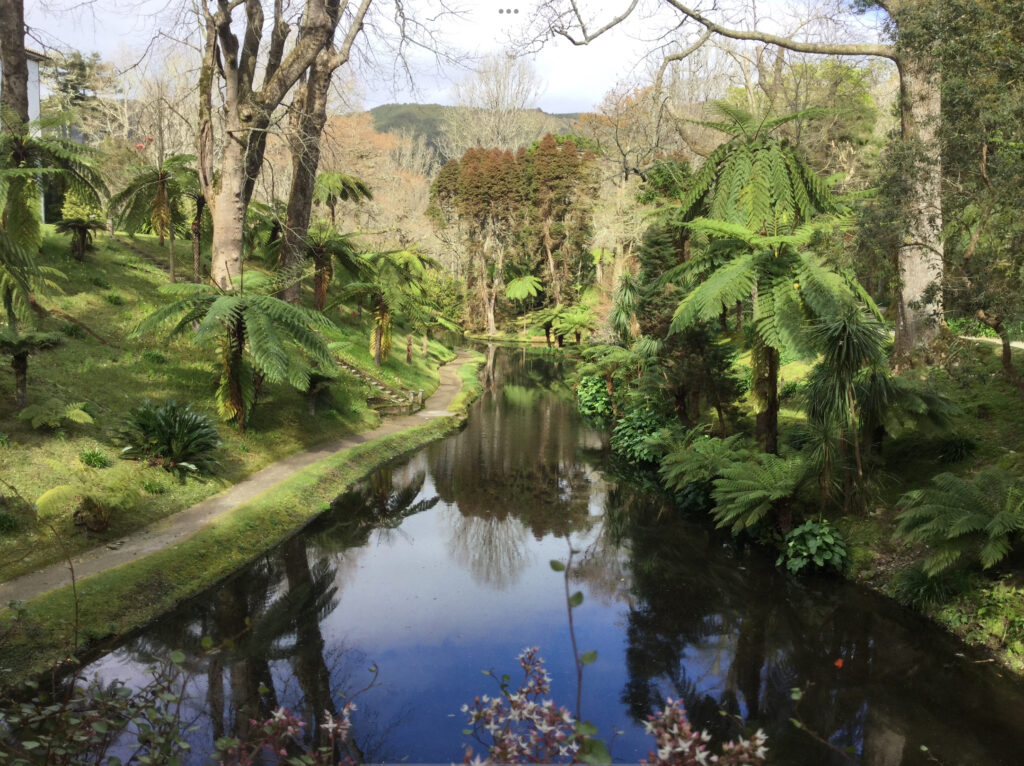
One-Day Trip Itinerary to Furnas (9:00 AM – 8:00 PM)
Experience the natural beauty, geothermal wonders, and culinary delights of Furnas, São Miguel Island, in a full-day itinerary that balances relaxation, exploration, and indulgence in local specialties.
9:00 AM – Arrival in Furnas Village
• Transportation: Arrive by car or bus from your accommodation. Parking is available in the village center.
9:15 AM – 10:45 AM: Caldeiras das Furnas
• Explore the Geothermal Hot Springs: Stroll through the Caldeiras das Furnas, where you’ll witness bubbling mud pools, steaming fumaroles, and hot springs.
• Local Delicacies: Try a cup of “Água Azeda”, a naturally carbonated mineral water from one of the local springs.
• Tip: Stay on designated paths and be cautious of hot surfaces.
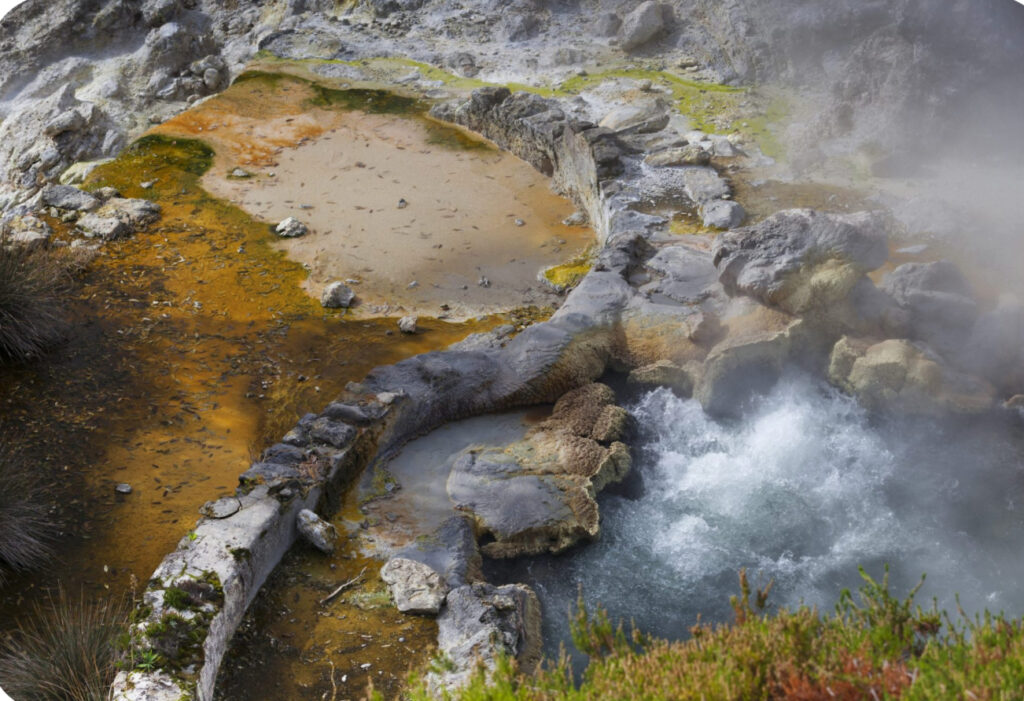

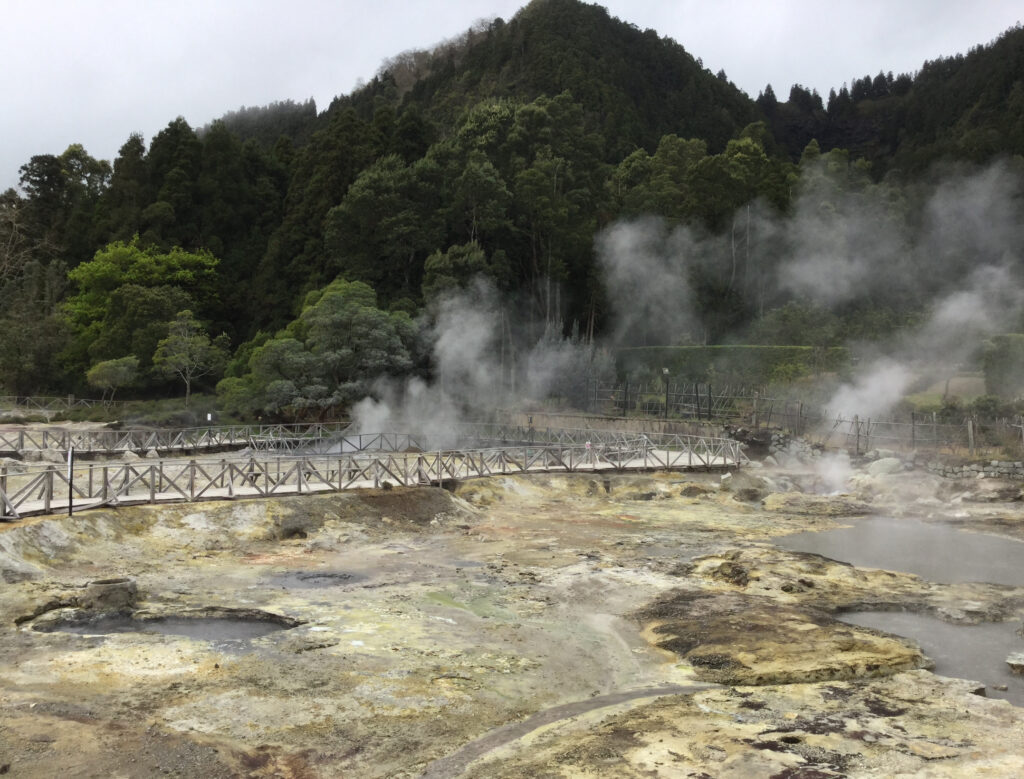
10:45 AM – 11:15 AM: Walk to Lagoa das Furnas (Furnas Lake)
• Scenic Route: Enjoy a leisurely 30-minute walk or a short drive to the lake, taking in the lush surroundings.
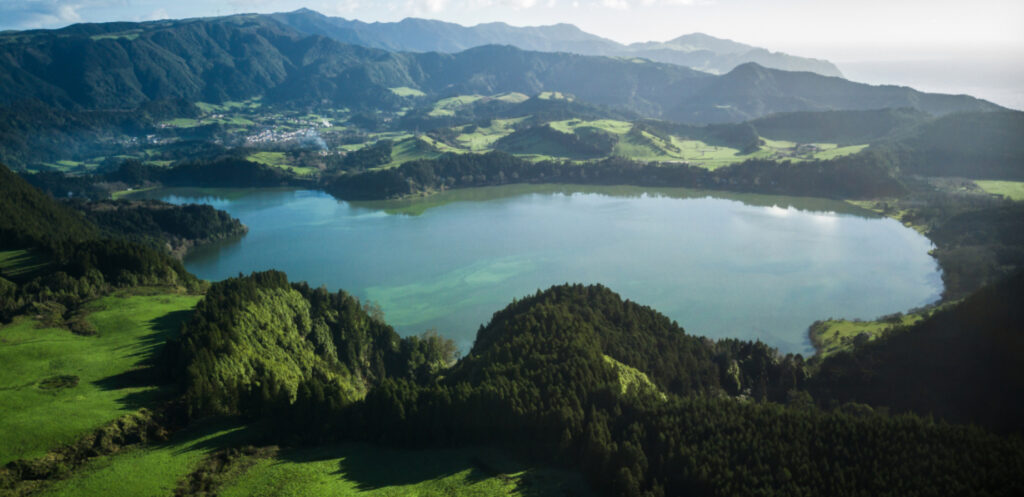
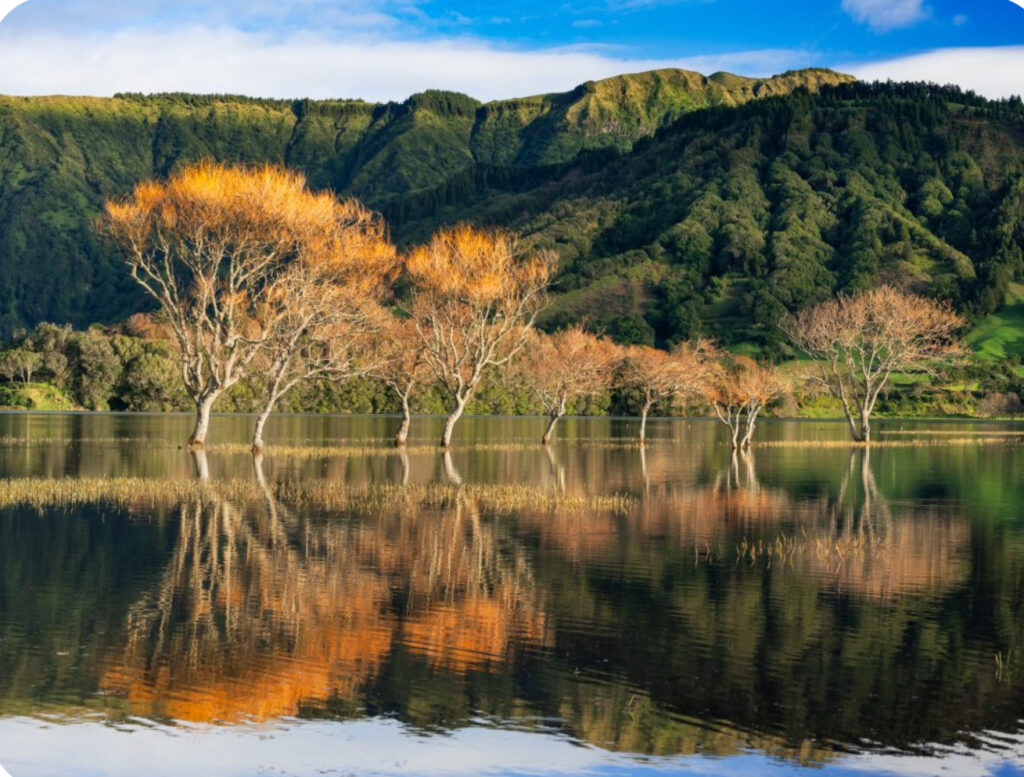
11:15 AM – 12:30 PM: Lagoa das Furnas
• Cozido das Furnas Preparation:
• Observation: Watch as locals and restaurant staff prepare the traditional Cozido das Furnas, a stew cooked underground using geothermal heat.
• Process: Pots filled with meats, vegetables, and sausages are lowered into the hot soil and left to cook for about 6 hours.
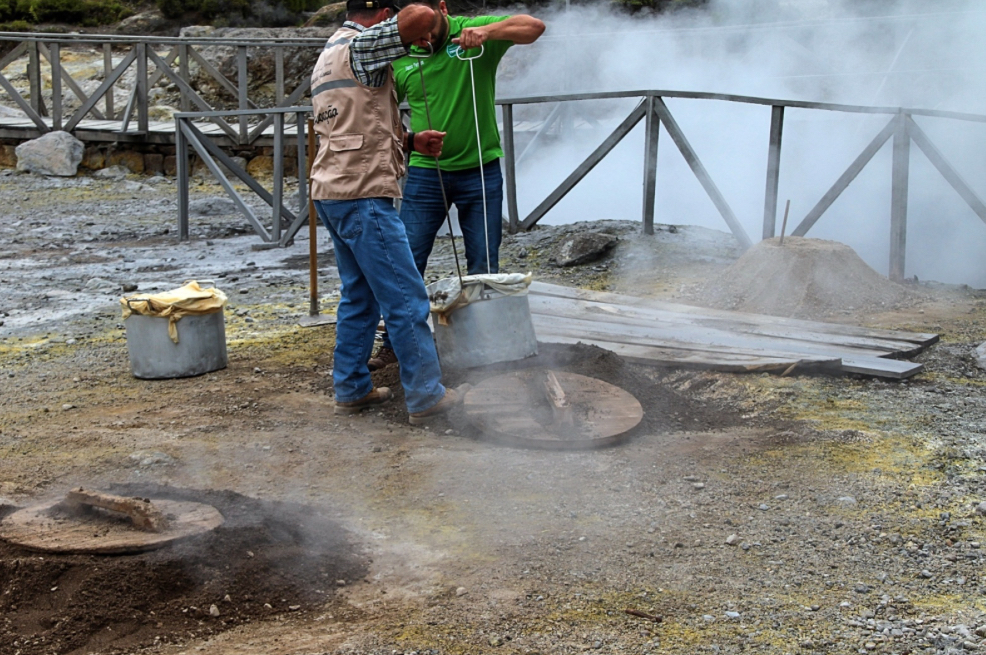
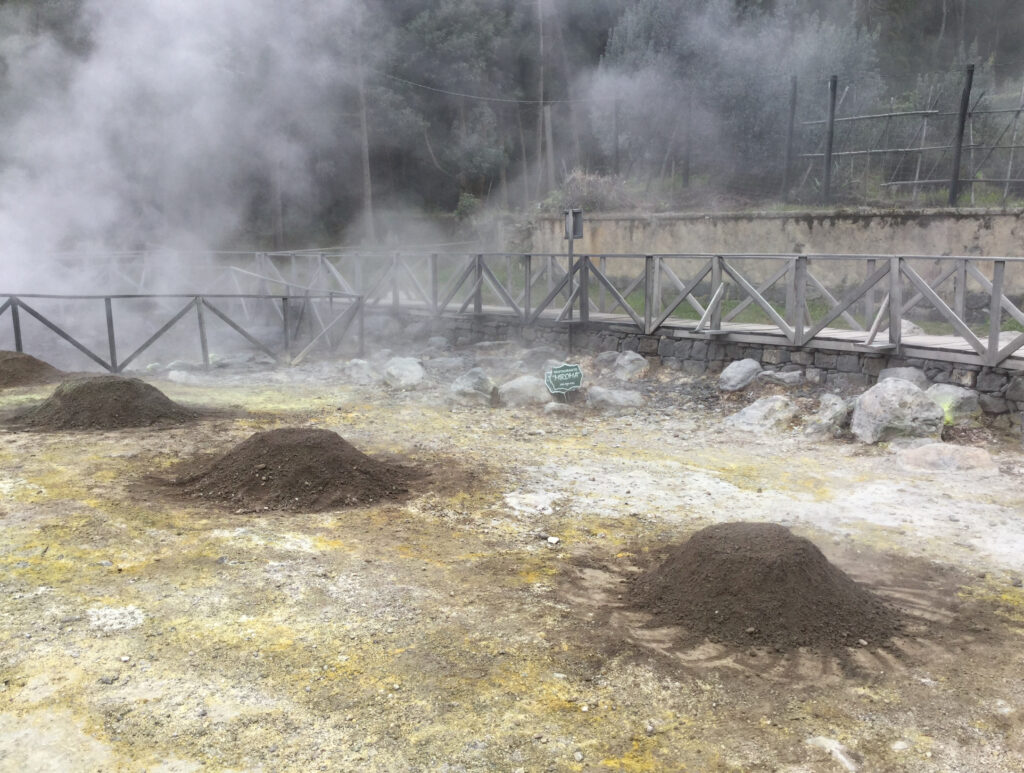
• Chapel Visit: Explore the Chapel of Nossa Senhora das Vitórias, a charming neo-Gothic chapel on the lake’s edge.
12:30 PM – 1:45 PM: Lunch at a Local Restaurant
• Savor Cozido das Furnas:
• Restaurants: Dine at Restaurante Tony’s, Restaurante Terra Nostra Garden, or Restaurante Miroma, known for serving this specialty.
• Experience: Enjoy the rich flavors infused by the geothermal cooking process.
• Local Beverages: Pair your meal with local wines or freshly brewed Azorean tea.
1:45 PM – 2:00 PM: Walk to Terra Nostra Garden
• Short Stroll: A 15-minute walk brings you to the entrance of the garden.
2:00 PM – 5:00 PM: Terra Nostra Garden and Thermal Pool
• Garden Exploration:
• Botanical Diversity: Wander through 31 acres of exotic and native plants, including the impressive camellia and fern collections.
• Highlights: Don’t miss the Avenue of the Ginkgo Trees, Palm Alley, and the Cycad Garden.
• Thermal Bathing:
• Thermal Pool: Immerse yourself in the large, iron-rich thermal pool set amidst the garden.
• Facilities: Changing rooms and lockers are available.
• Tips:
• Swimwear: Wear a dark-colored swimsuit to avoid staining from the iron-rich water.
• Time Management: Allocate ample time to both explore the garden and enjoy the thermal pool.
5:00 PM – 5:15 PM: Refreshment Break
• Local Snack: Grab a “Bolo Lêvedo”, a traditional sweet muffin-like bread, from a nearby bakery.
5:15 PM – 6:30 PM: Poça da Dona Beija Hot Springs
• Relaxation Time:
• Multiple Pools: Soak in a series of five natural thermal pools with varying temperatures.
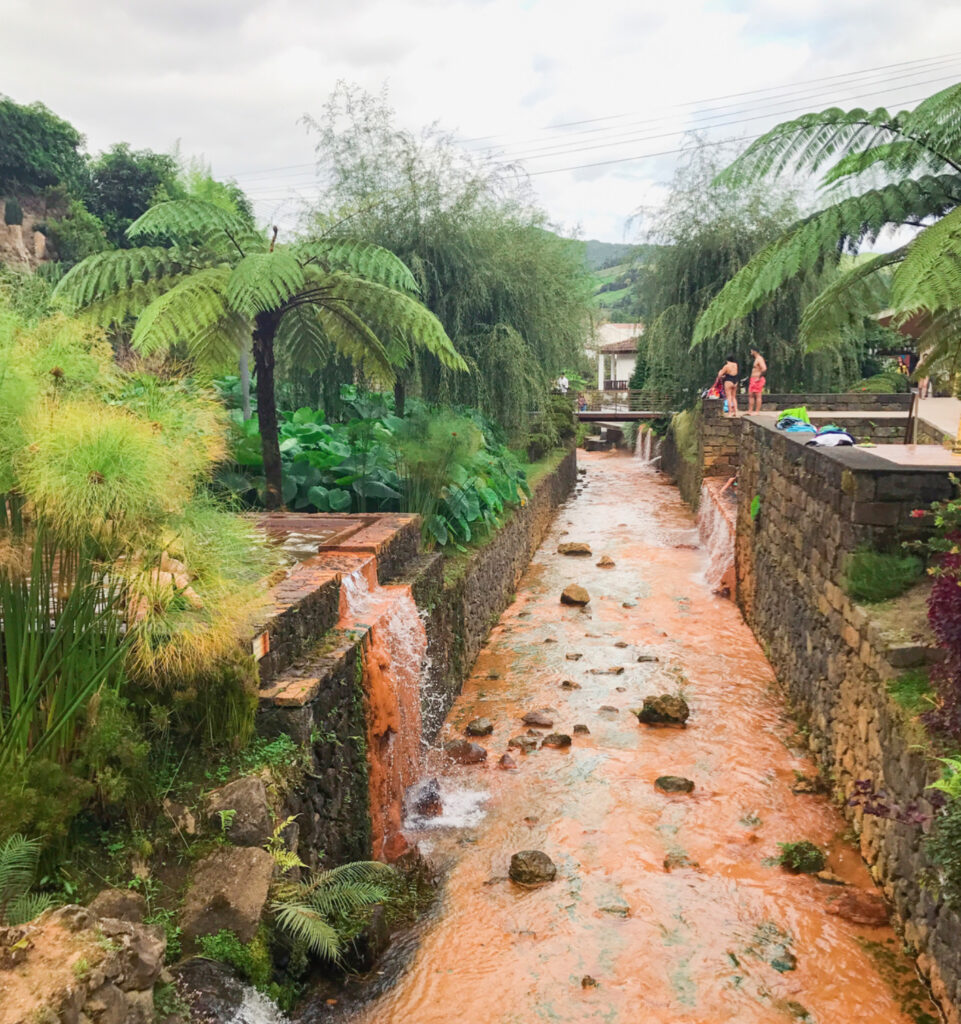
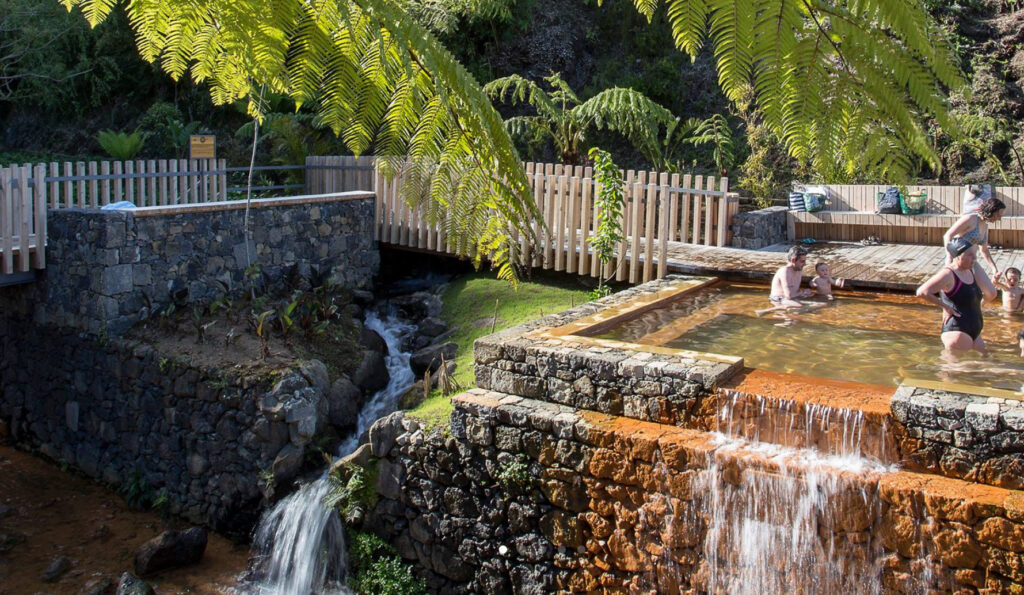
• Atmosphere: The setting is tranquil, surrounded by lush vegetation and the soothing sounds of flowing water.
• Facilities: On-site amenities include showers, changing rooms, and towel rentals.
• Tip: Evening is a perfect time to visit as the pools are less crowded and the ambient lighting enhances the experience.
6:30 PM – 7:30 PM: Early Dinner or Evening Snack
• Local Pastries and Tea:
• Tea Tasting: Visit a local café to sample Azorean tea from nearby plantations like Gorreana or Porto Formoso.
• Pastries: Try “Queijadas de Vila Franca”, delicious cheese pastries, or “Malassadas”, Azorean donuts.
• Alternative: For a light dinner, consider a soup made with local ingredients or fresh seafood dishes.
7:30 PM – 8:00 PM: Evening Stroll and Departure
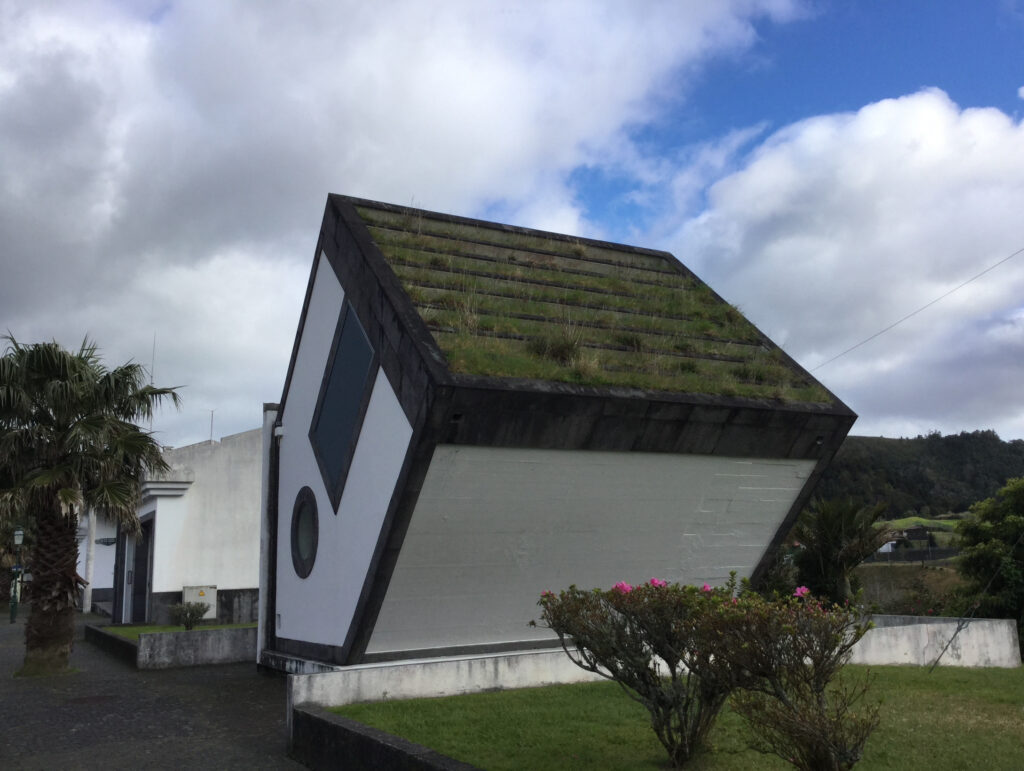
• Village Exploration:
• Architecture: Admire the traditional Azorean houses and the Church of Santa Ana.
• Souvenir Shopping: Purchase local handicrafts, teas, or jams as mementos.
• Sunset Views: Capture the beauty of Furnas as the day winds down.
Additional Tips
• Clothing:
• Layers: The weather can be unpredictable; wear layers and bring a light jacket.
• Footwear: Comfortable walking shoes are recommended.
• Health and Safety:
• Hydration: Stay hydrated, especially after thermal baths.
• Respect Nature: Follow guidelines at geothermal sites to ensure safety.
• Reservations:
• Dining: Consider making lunch reservations, especially during peak season.
• Entrance Fees: Be prepared to pay entrance fees at Terra Nostra Garden and Poça da Dona Beija.
Local Food Specialties to Try
• Cozido das Furnas: Geothermally cooked stew with meats and vegetables.
• Bolo Lêvedo: Sweet, round bread perfect as a snack or accompaniment.
• Queijadas: Sweet cheese tarts unique to the Azores.
• Malassadas: Fried dough pastries sprinkled with sugar.
• Azorean Tea: Locally grown black and green teas from Europe’s only tea plantations.
• Pineapple: Fresh Azorean pineapple, renowned for its sweetness.

